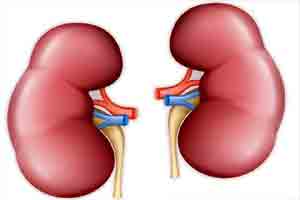- Home
- Editorial
- News
- Practice Guidelines
- Anesthesiology Guidelines
- Cancer Guidelines
- Cardiac Sciences Guidelines
- Critical Care Guidelines
- Dentistry Guidelines
- Dermatology Guidelines
- Diabetes and Endo Guidelines
- Diagnostics Guidelines
- ENT Guidelines
- Featured Practice Guidelines
- Gastroenterology Guidelines
- Geriatrics Guidelines
- Medicine Guidelines
- Nephrology Guidelines
- Neurosciences Guidelines
- Obs and Gynae Guidelines
- Ophthalmology Guidelines
- Orthopaedics Guidelines
- Paediatrics Guidelines
- Psychiatry Guidelines
- Pulmonology Guidelines
- Radiology Guidelines
- Surgery Guidelines
- Urology Guidelines
Gadolinium-based contrast agents in Kidney Disease: New CAR Guideline

Canadian Association of Radiologist has released Guideline for Gadolinium-based contrast agents in Kidney Disease. The same was necessary because the use of gadolinium-based contrast agents (GBCAs) in renal impairment is controversial, with physician and patient apprehension in acute kidney injury (AKI), chronic kidney disease (CKD), and dialysis because of concerns regarding nephrogenic systemic fibrosis (NSF).
The position that GBCAs are absolutely contraindicated in AKI, CKD stage 4 or 5 (estimated glomerular filtration rate [eGFR] <30 mL/min/1.73 m2) and dialysis-dependent patients is outdated, and may limit access to clinically necessary contrast-enhanced MRI examinations.
Following a comprehensive review of the literature and reported NSF cases to date, a committee of radiologists and nephrologists developed clinical practice guidelines to assist physicians in making decisions regarding GBCA administrations.
Key Recommendations of the guideline are as follows:
- In patients with mild-to-moderate CKD (eGFR ≥30 and <60 mL/min/1.73 m2), administration of standard doses of GBCA is safe and no additional precautions are necessary.
- In patients with AKI, with severe CKD (eGFR <30 mL/min/1.73 m2), or on dialysis, administration of GBCAs should be considered individually and alternative imaging modalities utilized whenever possible.
- If GBCAs are necessary, newer GBCAs may be administered with patient consent obtained by a physician (or their delegate), citing an exceedingly low risk (much less than 1%) of developing NSF.
- Standard GBCA dosing should be used; half or quarter dosing is not recommended and repeat injections should be avoided.
- Dialysis-dependent patients should receive dialysis; however, initiating dialysis or switching from peritoneal to hemodialysis to reduce the risk of NSF is unproven.
- Use of a macrocyclic ionic instead of macrocyclic nonionic GBCA or macrocyclic instead of newer linear GBCA to further prevent NSF is unproven.
- Gadopentetate dimeglumine, gadodiamide, and gadoversetamide remain absolutely contraindicated in patients with AKI, with stage 4 or 5 CKD, or on dialysis.
- screening for renal disease is important but less critical when using macrocyclic and newer linear GBCAs.
- Monitoring for and reporting of potential cases of NSF in patients with AKI or CKD who have received GBCAs is recommended.
The guidelines have been published in the Canadian Association of Radiologists Journal.
For further information click on the link: https://doi.org/10.1016/j.carj.2017.11.002

Disclaimer: This site is primarily intended for healthcare professionals. Any content/information on this website does not replace the advice of medical and/or health professionals and should not be construed as medical/diagnostic advice/endorsement or prescription. Use of this site is subject to our terms of use, privacy policy, advertisement policy. © 2020 Minerva Medical Treatment Pvt Ltd